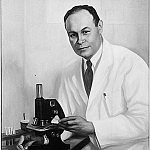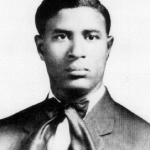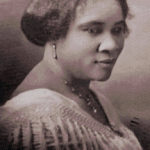African American Inventors
In honor of Black History Month, the Chicago Citizen proudly presents Black inventors who have made an indelible mark on everyday living and quality of life. These visionaries are pioneers where many developed inventions at a time when Blacks were marginialized in society.
Dr. Charles Drew was born on June 3, 1904 in Washington, D.C. and is one of the most foremost pioneers in the medical profession.
Drew developed a technique that enabled the long-range preservation of blood plasma.
Prior to Drews findings, blood could not be stockpiled for more than two days because of the swift disintegration of red blood cells.
However, Drew discovered that by separating the plasma (the liquid part of blood) from the whole blood (in which the red blood cells exist) and then refrigerating them separately, they could be preserved for as long as up to a week and then re-joined and used safely for blood transfusions.
Drew was the first African American to receive a Doctor of Medical Science degree from Columbia University and in 1948 was awarded the Spingarn Medal from the NAACP for his blood plasma research. His development of the blood plasma bank has afforded millions a second chance at life.
On April 1, 1950, Drew was involved in a car accident and urban legend states that he was taken to an all white hospital and denied a blood transfusion that resulted in his death. Other accountings of the incident site that Drew did in fact receive a blood transfusion but his injuries were beyond the expertise of his attending physicians.
Garrett A. Morgan was born on March 4, 1877 in Kentucky. Morgan has several inventions to his credit including the first human hair straightener and the gas mask. He is arguably most famous for creating the traffic light.
It is noted that Morgan witnessed an automobile accident where the vehicle collided with a horse and carriage. The driver was unconscious and the horse was euthanized. After the debacle, Morgan developed a device that streamlined traffic flow without a policeman or traffic worker.
He patented an automatic traffic signal which he said could be "operated for directing the flow of traffic" and providing a clear and explicit "visible indicator."
Morgan later sold the rights to the traffic signal to the General Electric Company for $40,000 and contemporary traffic lights are derived from his original prototype.
In his later years, Morgan lost 90 percent of his vision due to glaucoma. He died on July 27, 1963.
Madam C. J. Walker was born Sarah Breedlove December 23, 1867 in Louisiana. Her parents were sharecroppers and both died when she was a child. At age 14, Breedlove married Moses McWilliams and gave birth to a daughter, Leila. Breedloves husband died years later and she then moved to St. Louis.
Working as a washerwoman and maid, Walker developed a hair care product to stimulate hair growth for colored women which she later developed into a full hair care line which proved to be a lucrative invention because there were no other hair care products for African Americans at the time.
In 1905, Walker met Charles Joseph "C.J." Walker, a newspaperman with innovative marketing skills. Breedlove married Walker in 1906 and together they created the Madam CJ Walker Manufacturing Company and advertised the company in Black newspapers across America.
By 1914, Walkers net worth was more than one million dollars. Her companys product line included hair conditioners, facial creams and hot combs.
Walker died in 1919 and is remembered throughout the Black community as a beauty and business pioneer.
Lonnie Johnson was born on October 6, 1949 in Mobile, Ala. During his formative years, Johnson created toys with his brothers. In high school, he competed in a national science competition and presented a robot made of junkyard scraps and won first place. He later attended Tuskegee University on a math scholarship.
Johnson worked extensively in the engineering field before developing a toy that created a worldwide frenzy.
In the 1980s Johnson began tinkering the idea of creating a water gun that was safe for children. Water guns at the time were ingenuous and inexpensively made.
Johnson developed a working model called Power Drencher. He and his partner then began trying to market the toy while securing a patent.
The patent was secured in 1991 and the toy was called Super Soaker. Within the next 10 years more than 200 million Super Soakers were sold. Johnson was inducted into the Inventor Hall of Fame in 2000.
Sources: blackinventor.com By Thelma Sardin
Latest Stories
- Reminder: Taxes are due December 15, 2025. Pay now to avoid late fees. Struggling financially? Our Payment Plan Calculator is a tool you can use
- TWO GOVERNMENTS TO FORMALIZE HISTORIC PARTNERSHIP IN ADDRESSING MENTAL HEALTH CRISIS DURING THE HOLIDAY SEASON
- Trump's Policies Negatively Target Women
- Assessor Kaegi, South and West Side Community Leaders Urge Legislature to Pass Property Tax Relief, Condemn Board of Review's Large Breaks for Downtown Commercial Properties
- State Farm and The Salvation Army Launch National Donation Drive to Support Families This Holiday Season
Latest Podcast
Stacy Davis Gates





